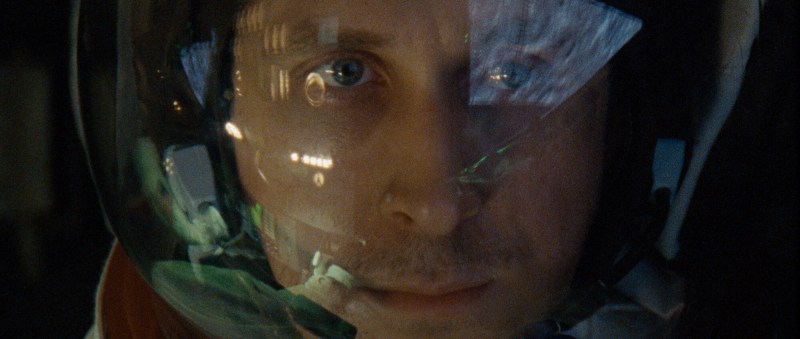Damien Chazelle has made a name for himself directing ambitious films often focused on jazz. At 32, he became the youngest person ever to win the Oscar for Best Director for his Hollywood movie-musical “La La Land.” While at first an unlikely candidate to direct a space movie, there’s actually something quite poetic about Chazelle being at the helm of “First Man.” Based on James R. Hansen’s biography of Neil Armstrong, “First Man” tells the story of another history-making young man — the first man to set foot on the moon, Neil Armstrong. In addition to his engineering and aeronautic talents, Armstrong happens to have had a particular love for showtunes.
Chazelle’s “First Man” is so much more than a NASA story. As America races to land a man on moon, Neil Armstrong bears the burdens of tragedy at home and tragedy at work. From the opening shot, it is clear that the film is about Armstrong’s experience. We are confronted by the violent tremors of his cockpit as he endures a risky high-altitude flight. Chazelle chooses to shoot most of the film in close-up, if not extreme close-up, with a shallow depth of field. While this may have been a strategic choice to save money on set-building and set-dressing, it also thrusts us into Armstrong’s world and invites us to inhabit his personal space. This emphasis on close-up and proximity contrasts with the vast expanse of outer space, a frontier rarely shown yet narratively omnipresent.
Chazelle ensures that we identify primarily with this first man, and with the mission and its successes second. Instead of focusing on the scientific achievements, failures and challenges of NASA’s space program, Chazelle focuses on Armstrong’s emotional journey throughout the entirety of his training for the Apollo missions. By bringing the camera lens into intimate proximity with Neil Armstrong’s face, with the control panels and warning lights, with the characters’ sorrowful tears and shaking hands, Chazelle makes natural and relatable the high-tech world of astrophysics and strict protocol.
However, “First Man” is so narrow in its emphasis on Armstrong’s interior world that we crave a broader perspective. In her role as Armstrong’s wife, Jan, Claire Foy allows us to make sense of Neil’s aloofness and understand him from a different angle. She is more vocal than Neil, understated yet just explicit enough in her worry. She carries herself with an air of understated strength and dignity and yet is fiercely practical in her concern for her husband, her family and the risks warranted by the space race.
She is asked to go where no woman had ever gone before. Jan must not only confront the reality that her children might lose their father but that they might lose their father to the vacuum of outer space. With her voice firm and her eyes piercing, she demands her husband tell their two sons that he might not return from his impending Apollo 11 mission, a truth so grave he is almost unable to articulate it.
Chazelle’s “First Man” is understated and profoundly human, intensified primarily by the expert sound design and eclectic score. When the classic show tune “Oklahoma!” plays in the background of Jan’s pool day with the kids, it becomes apparent that it is the soundscape rather than the visual landscape that gives “First Man” its depth.
To shoot a film about the great unknown in such a personal way is perhaps the genius of Chazelle’s “First Man.” He subverts our expectations for the portrayal of outer space by instead using the camera to invade Ryan Gosling’s personal space. However, it is being able to feel the vibrations of the soundtrack in a theater with surround sound that gives “First Man” its lift. It’s as if you’re in the cockpit alongside Neil Armstrong, Buzz Aldrin and Michael Collins as they careen towards the moon. It’s as if you’re listening to your own heart race, your own breath catch, your own helmet shake as you brace yourself for a bumpy ride into an uncertain destiny. First and foremost, Chazelle’s film is the story of Armstrong, the man. Secondly, it’s an homage to the ones who dream even when the odds for success are unknown and unprecedented. Neil Armstrong has become an icon, but “First Man” reminds us of his humanity, his pragmatism, his sincerity and the trials he faced even as he prepared to make history.
Contact Hayley Hodson at hhodson ‘at’ stanford.edu.
